
views
Removing Stains with Lemon Juice or Vinegar
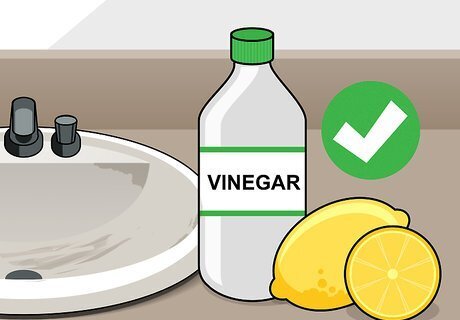
Apply lemon juice or vinegar to any stained areas. These mild acids are especially effective at removing rust stains. If you use lemon, you can either squeeze the juice onto the stain or gently rub the stain with a lemon wedge. Alternatively, pour a little white vinegar on the stain.
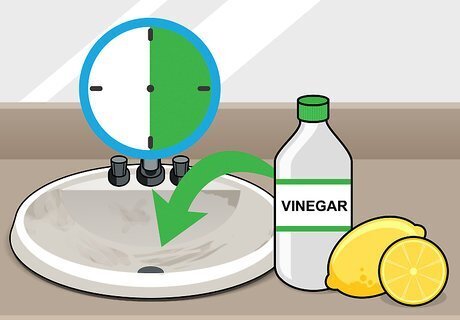
Allow the cleanser to sit for a while. While lemon juice and vinegar are both fairly gentle, they should not be left sitting on your ceramic for too long. Allow the stained area to soak only as long as necessary, or you might risk etching the surface or your sink, which will make it harder to clean in the future. Try wiping the stained area with a gentle sponge or cloth after half an hour or so to see if the stain is ready to come off.

Wipe down the stained surface. Don’t use anything too abrasive. The soft side of a kitchen sponge or a washrag should work for this purpose. While it may be tempting to reach for a Magic Eraser, melamine sponges actually work like a very fine-grained sandpaper, and can scratch up your sink.
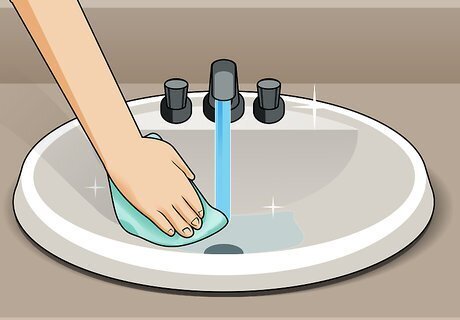
Rinse thoroughly. After using any kind of acidic cleanser on your sink, you should carefully rinse it away with water. Make sure there isn’t any residual lemon juice or vinegar sitting in your sink, gradually eating away at the ceramic.
Removing Stubborn Buildup with Baking Soda
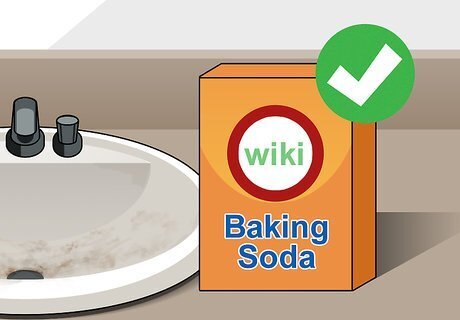
Use baking soda as a last resort. Although it is very mild compared to other abrasive cleansers, baking soda (sodium bicarbonate) can still scratch up your sink. Use it only if you can’t take off the dirt with soap and water or lemon juice.
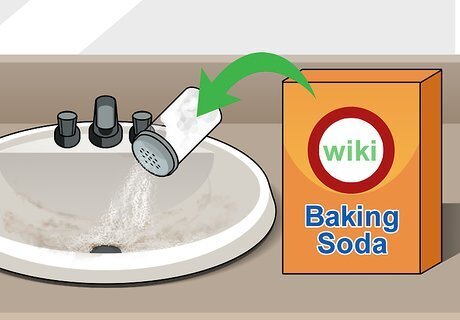
Apply baking soda to dirty areas with a shaker. You can use a repurposed sugar shaker, or make your own shaker by punching a few holes in the lid of a jar. Shake on a generous quantity of baking soda. Make sure the sink is damp when you apply the baking soda so it forms a paste.
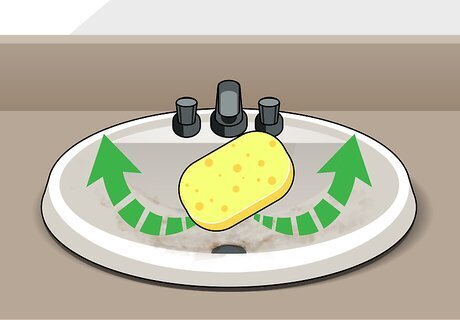
Carefully scrub with a sponge. Use a slightly damp (not soaking wet) scrubber to gently rub away the dirt. The baking soda should form small clumps that take the dirt with them as they come up. Use a non-scratch scrubbing sponge. Avoid steel wool or pumice stones for this purpose, as both can do a lot of damage to ceramic or porcelain sinks.
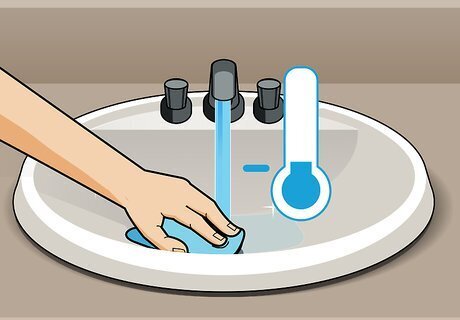
Rinse away the baking soda. Run some cold water into the sink and rinse away any remaining dirt and baking soda. Wipe down with a clean, dry towel or rag.
Maintaining Your Sink

Regularly wash your sink with soap and water. You can prevent dirt and stains from building up in the first place by gently washing your sink after every use. Use a little dish soap and a soft, non-abrasive sponge, and rinse thoroughly with clean water.
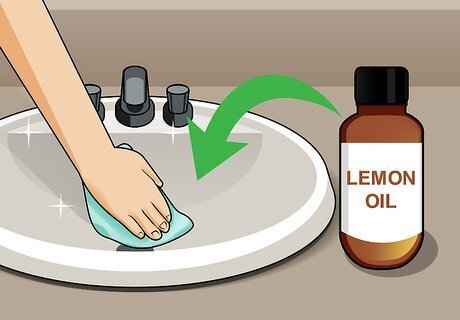
Wipe down your sink with lemon oil. Lemon oil will help keep your sink smelling fresh, and give it a beautiful sheen. The oil also protects your sink from stains and dirty buildup. Apply a little lemon oil after your regular cleaning.
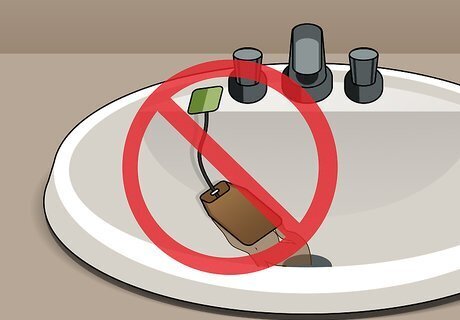
Avoid leaving anything staining in your sink overnight. Coffee grounds, tea bags, wine, and other dark or staining substances can leave permanent or hard-to-remove marks on your sink. Prevent stains by quickly removing anything that could mark your sink, and rinsing thoroughly after exposure.

















Comments
0 comment